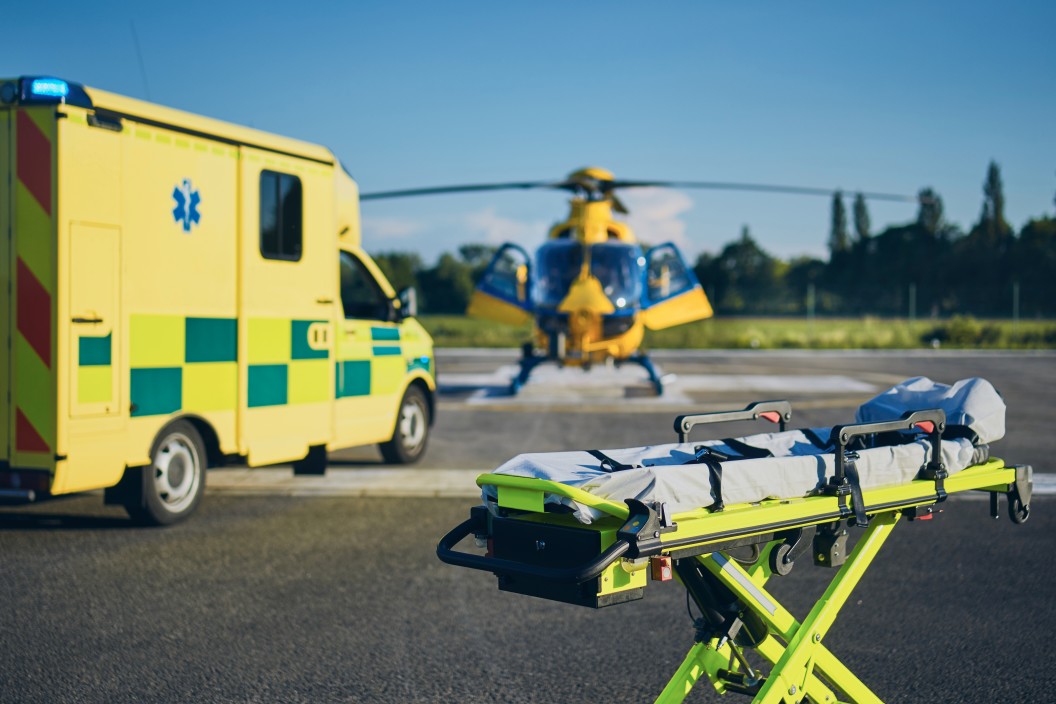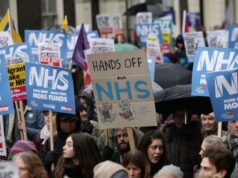A long term plan in our view should have a clear strategic approach, which should be clearly stated and run through the document. ESON believes this is missing.
The NWL LTP is not explicit or transparent enough in stating that deficit-driven significant cuts in spending are at the heart of this plan. We consider that it would inevitably reduce the quantity and quality of care services over probably five years.
Without such a clear strategic approach being stated, we are concerned that the document raises more questions than it answers. We are raising many of these questions here, but there will be more.
The lack of a stated overarching approach also means that the consultation process is presenting us with an impossibly huge number of issues, covering organisation and the delivery of services to two and a half million people with a range of needs.
Much of our comments involve questions for which we require answers. As well as this document representing comments on the NHS NWL it constitutes a Freedom of Information Request.
Photo @Chalabala via Twenty20
Primary Care
We are surprised that the current patient registration figure in NHS NWL is as high as 2,485,629.
The Acton PCN with over 77,000 patients is unacceptably large
Improved access to psychological therapies? How many additional trained staff and in post when?
Where is the Mental Health chapter page?
Where is the evidence that a two hour meaningful response to a mental health crisis can be guaranteed in Ealing?
Of the 9,000 people returned home ‘early’ from hospital, what % of them were re-admitted within 1, 2 and 6 months?
How is NHS NWL ‘embedding’ a system to capture the voice of extremely knowledgeable and well informed groups like BPV, ESON and SCXH&H?
Accessible Care
How will NHS NWL increase GP capacity? Using capital grants maybe?
Two hour response to mental health community service users? See previous comment.
Just how will NHS NWL ensure ‘easiness’ in getting the ‘right’ support?
Proactive Planned Care
What is meant by ‘holistic personalised care’? If it’s not defined then it’s meaningless.
There are grossly inadequate Primary Care, Community Care and volunteer mental health staff in Ealing to provide a ‘full package’ of social support for people (who are mentally ill or mentally disabled).
Co-ordinated Care
Where is the performance data evidence that Multi-Discipline Teams (MDTs) are consistently active and/or effective?
Care Home care involving MDTs is surely aspirational rather than consistently deliverable.
Planned Activities
Surely PCNs will have clinical pharmacists and SPLWs – not NHS NWL?
What is the budget for creating, developing and maintaining a ’network of Primary Care and community training hubs’?
How will we know that we’re making a difference?
By March 2020, 60% of those with Serious Mental Illness (SMIs) will have five physical health checks. With an estimated 24,856 SMIs in NHS NWL this is quite some claim. (1% of population suffering from bipolar or Schizophrenia). How many SMIs were tested in 2018/19 and how many so far in 2019/20? Also explain how this physical illness data analysis will be acted upon to help the 24,856?
‘People will be able to make one phone call to get the care they need’. Not true in Ealing. Separate Secondary mental health SPA and Community mental health SPA.
Reducing Pressure on Emergency Hospital Services
‘Standardise the standard of Urgent Treatment Centres (UTCs)’. Are UTCs the same as Urgent Care Centres (UCCs)? If not please define UTC. If one visits Ealing Hospital UCC on a Sunday, you are likely to be re-directed to a GP practice in central Southall for triage, diagnosis and treatment. Is such a re-direction process ’standard’ across NWL on Sundays?
NHS NWL cannot ‘ensure people receive the right care, in the right place at the right time’. Anecdotally we know of Ealing mental health sufferers waiting months/years for psychotherapy. West London NHS Trust’s failure to report 18 week RTT performance data compounds this felony.
‘We will strengthen services at the front door of the hospital’. We look forward to seeing this. Many NHS NWL hospital ‘front doors’ are bleak and unwelcoming. Northwick Park and Ealing Hospitals are sadly examples of ‘weak front door services’.
Planned Activities
‘Benchmark and compare and continuously improve’
‘Understand specific local drivers’
It beggars belief that NHS NWL has not done this stuff for decades. Also does NHS NWL have the resources to analyse, diagnose and treat?
‘30% of NELs Same Day Emergency Care (SDEC)’. Is this achievable? What is it now?
‘a pan NWL London hub’. What is this? Where is this?
‘free up a further 100 beds by April 2020’. What makes NHS NWL think this is possible. Long range weather forecasters are already predicting a hard, cold winter.
‘Personalised multi-disciplinary care plan’.. we know of no-one who has one of these. How many are there now? What are the targets for years 1,2,3,4 and 5?
‘District Nursing Teams’. Do these still exist? How many District Nurses are currently employed within NHS NWL?
Giving People More Control…
1,000 trained SPLWs. Across England that works out at 1 SPLW/67,500 residents/patients. In the Acton PCN, with over 77,000 patients at 15 GP practices, there might be 2 SPLWs. A useful idea poorly implemented.
What are ‘Digital Healthy Hubs’. What are they? Where are they?
Tobacco, Obesity, Diabetes, Alcohol, Air Pollution….
We really do think that the priority should be mental health illnesses amongst young people. Mental illness is often the pre-cursor to substance abuse.
What NHS resources are available to tackle rough sleeper issues?
Improving Cancer Outcomes
What is meant by ‘work with emerging PCNs to improve early diagnosis’? Does this involve training/education of NWL’s 356 GP Practices and their 1,000+ GPs?
What are ‘Radiotherapy networks’?
Who are these ‘care navigators’? What are their skill sets, qualifications and experience? How many will be available in years 1,2,3,4, and 5?
In 2012 at the World Economic Forum in Davos, the great and the good met at the Workplace Wellness Alliance. Figures were presented showing 38% of ill health was attributable to mental illness in rich countries. 22% was attributable to heart disease, stroke, cancer, lung disease and diabetes. We doubt whether these figures have changed much. Hence this section should be about improving mental health outcomes – and not cancer outcomes.
Digitally-enabling Primary Care and Outpatient Care
According to statistica.com in 2018 it was estimated that 49% of 55 to 64 year olds do not use Smartphones. The percentage is probably much higher for those over 64 years old. We are consistently told that the highest growth in patients with multiple complex physical and mental illnesses is amongst the elderly. Apps, however brilliant they might be, offer little or no help whatsoever to the 270,00+ over 64s in NWL.
Improving Mental Health Services
This is the elephant in the room as far as ESON is concerned
What is the ‘detailed Mental House Annex’? Is this a building? Where will it be located? What is its function and capacity? What will be the cost of construction, staffing and maintenance? Is this cash available?
At the HCT/KONP ‘Mental Health Crisis Summit’ held at the Royal Free Hospital on 28 September 2019, grave concerns were voiced by many of the 250 attendees about the quality and effectiveness of current IAPT offerings across London and elsewhere. An independent review of NHS NWL IAPT services is urgently required.
Anecdotally there is no consistency of service levels at mental health ‘Sectioning’ facilities. Charing Cross Hospital’s facilities are often praised and St Bernard’s Hospital facilities often criticised.
The two community models contain laudable aspirations. However we have little confidence that money, staff and beds will be made available to meet these aspirations.
Crisis Care
What is a ‘Crisis haven prototype’?
West London NHS Trust does not publish performance against the statutory 18 week Refer To Treatment (RTT) metric. Anecdotally the RTT is regularly missed. Stories of 1 and 2 year waits for psychotherapy abound. Will enough money, staff and beds be available to treat even 50% of the 24,856 SMIs in years 1, 2, 3, 4, or 5?
Many SMIs we suspect have been recently discharged for Secondary Care to Primary Care. Anecdotally many NWL GPs are ill equipped to provide Primary Mental Health care. In Ealing Community Mental Health services seem stalled in some sort of political impasse. There’s nothing in the NWL LTP about training and educating the 1,000+ NHS NWL GPs in Mental Health Primary Care.
There is also nothing here about developing pathways from Primary Care back into Secondary Care when SMIs have a relapse. There is also nothing about collecting and regularly publishing the numbers of SMI’s relapsing in Primary Care.
We really cannot believe the following is based on reality:
‘The NWL Health and Care Partnership has developed outcome measures to understand how our mental health system is performing’ as part of an ICS, identifying areas for service improvement and to reduce health inequalities and address unwarranted variation’.
To allay our doubts about the above statement, please send us details of these ‘outcome measures’ and the underlying evidence which supports them.
Incredibly there are no mention whatsoever in the NHS NWL LTP of carers, carer groups, the role of carers, NHS NWL development and funding of career groups and carers. Carers are often the reliable and trusted advocates for the mentally ill and mentally disabled.
Shorter Waits for Primary Care
‘developing better forms’ is a case of form over content.
It really is quite preposterous to suggest that GPs are generally incompetent when deciding to refer a patient to a hospital consultant. The much hyped £3+ million Referral Facilitation Service (RFS) in Ealing run by US giant UnitedHealth is to be abandoned by Ealing CCG in October 2019. Allegedly very few Ealing GP referrals were over-ruled by the RFS GP panel. The whole scheme is now deemed to be a complete waste of money.
Telephone voice, mobile phone text, video and email will never replace physical face-to-face ‘hands on’ patient consultations.
This section is laden with clinical references almost exclusively to dermatology. What about audiology, cardiology, colonoscopy, endoscopy, gynaecology, haematology, neurology, etc, etc (you get the picture).
‘rightcare/right people/right time’ is not going to be achievable when the policy is clearly one of reducing the number of GP referrals to hospital consultants. We are concerned that there may emerge a direct correlation between the reduction in the number of GP referrals to hospital consultants and a possible increase in the mortality rate.
Population Health
We found a considerable amount of waffle in this section.
Building and revising ‘dashboards’ (secure or not secure) is generally about measuring and monitoring performance. The existence of maintained dashboards does not, per se, have any direct relationship with analysing the readings and having the money and resources to carry out changes in the quantity or quality of service the dashboard readings suggest.
What are ‘case-finding tools’?
Identifying high usage A&E attendees or those with high NEL profiles will do nothing empirically to reduce their pain, ‘cure’ them or improve their life expectancy.
What’s a ‘risk-stratification algorithm’?
‘links to family records’. This is just pie in the sky. Family diasporas are such that a son may live or have lived in London, his mother in Ireland and his father in Lancashire. For many families links to family medical records are a complete non-starter.
‘We will work with social care to include future appropriate details from social care records into the dashboard’. Do such social care records exist across the whole of NWL? Is this exercise to be attempted for all 2,485,629 registered patients?
The planned actions do seem like science fiction to us. For example we have seen no ’pro-active support to prevent future deterioration’ in mental health. Let’s be realistic and admit that crisis intervention is the best that can be achieved until significant improvements take place in staff recruitment and training, capital investment in existing and new buildings, in the number of specialist beds, doctors (of all sorts), nurses (of all sorts), support staff of all kinds and psychologists.
What about ‘quality improvement models’?
The rest of the section on ’What difference….’ And how will we know…’ makes for painful, unrealistic reading. Care delivery staff are run off their feet, often doing two jobs because their colleague left and was not replaced. We have been told that more cost savings are required because of the large deficit.
A Strong Start for Children and Young People (CYP)
The national LTP makes a ridiculous prediction about how much better CYP will be in 2028. Where’s the evidence for this? We currently have a virtual mental health epidemic of self-harming and other mental health conditions amongst teenage girls. Will that be ’solved’ any time soon for example? And to compound this, in the draft NHS NWL LTP submission mental health issues are virtually completely absent in this section.
Learning Difficulties and Autism
Hear again we argue with the LTP about priorities. Anxiety disorders and conduct disorders /ADHD are far more prevalent than Autism. Also in terms of treatment percentages, Schizophrenia is vastly under-treated compared with Autism Spectrum disorders.
Better Care for Major Health Conditions
Disappointing that mental health is not included here. One in five adults suffers from mental health problems. In NHS NWL that amounts to some 360,000 sufferers. (Only back pain rivals this number of sufferers – and that doesn’t even get a mention).
Developing an ICP
As we are Ealing based, we have just reviewed plans for an Ealing ICP.
Sadly what we are presented with is two slides with text on slide 2 too small to read. The contents of the two slides are either aspirational and/or littered with management consultant terms or unexplained jargon.
There is little here on social care and nothing on Secondary Mental healthcare, but lots about Acute.
It’s incredible to us that The Trust which runs Ealing Hospital (LNWUHT) is not part of Ealing ICP.
The Better Care fund (BCF) is mentioned but this cash runs out at the end of March 2020.
There is a weird unexplained graphic with includes ‘Hillingdon (12)’, ‘Chelsea & Westminster (10), London North West (48) and Imperial (27). What does it mean?
Is the Ealing ICP to be a delegated commissioning and service delivery body? Or is it just to be a delegated commissioning body? I think this should be made clear.
Finally:
‘Our Principles of integration.
+ A preventative, assets-based and population-health management approach’
We have absolutely no idea what this means.
Eric Leach, Vice Chair
Ealing Save Our NHS
13 October 2019




